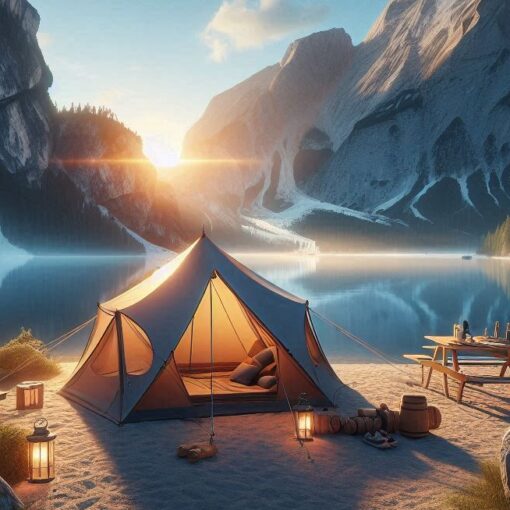Top Takeaways and Key Concepts
- Tell someone your plans before heading outdoors to ensure help can find you in an emergency.
- Research your route and terrain before leaving to avoid getting lost or surprised by hazards.
- Pack essential safety gear and supplies like first aid, navigation tools, and extra food.
- Stay hydrated and store food securely to maintain energy and avoid attracting wildlife.
- Check weather conditions and wildlife risks so you can adjust plans and stay safe.
Summary of This Article
This article explains how to enjoy outdoor adventures safely while avoiding common hazards like getting lost, bad weather, or wildlife encounters. It emphasizes telling someone your route before leaving, preparing by researching the area, and packing essential gear such as first aid kits, navigation tools, and extra food and water. The article also advises staying aware of changing weather conditions, keeping food secured from animals, and being prepared for emergencies with backup plans and safety tools. With a little planning and awareness, outdoor trips can stay fun, safe, and full of great memories.
Short Video Version of this Article
The beautiful outdoors! You can hike, camp, and just be in nature there. I prefer to think of it as a giant play area. You know, with trees, streams, and yeah, mosquitoes swarming around like they own the place. And bears too!
Nothing beats the exhilaration of an adventure in the woods. It feels great to be outside. But we need to put safety first. No one wants their camping trip to turn into “Survivor: The Bad Decisions Edition,” do they? That would be a huge letdown.
Please Note: This post may contain affiliate links. If you click one of them, we may receive a commission at no extra cost to you. As an Amazon Associate, I earn from qualifying purchases.

Let’s talk about some smart ways to stay safe while having fun outside. Before you leave your comfortable house, always tell someone where you’re going. In case something goes wrong, like being lost or running out of munchies (gasp!). If someone knows your plan, they can help if you need it.
It’s also important to keep an eye on wildlife. Animals can tell you’re coming if you make noise while trekking. They’d prefer stay away from us regardless. If you see one that looks interested? For a moment, just back away gently and act like you’re a tree.
And how about snacks? Oh god, don’t forget those! High-energy foods help us keep going on long hikes. Granola bars and nuts are great! But be sure to keep food safe at camp so raccoons don’t hold wild parties next to your tent.
It’s also quite sensible to plan for changes in the weather. It might go from being bright to raining or snowing out of nowhere! Checking the weather ahead of time keeps surprises from happening.
These guidelines will help us have fun exploring without any scary surprises waiting for us. Let’s have fun outside together every moment, even if we get dirty and tired by the end of the day!
Know What to Expect
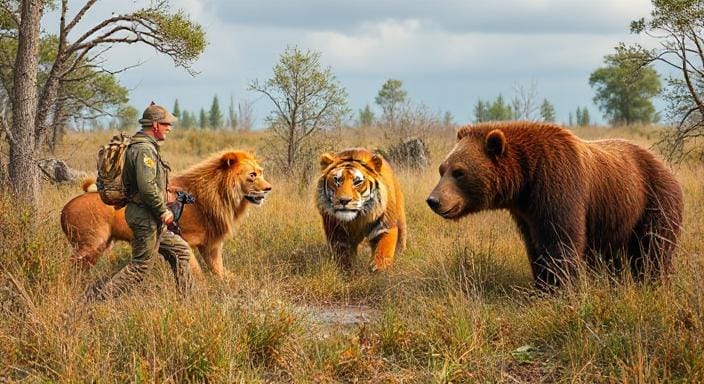
It’s crucial to conduct your research before you go on your big trip. And when I say “homework,” I don’t mean looking up amusing cat videos on Google. Those are fun too.
It’s important to learn about where you’re going. What kinds of animals might you see? Are there any certain types of weather that you should be on the lookout for? Is that cute little stream really home to a family of beavers that protect their territory?
It’s also quite important to look at trail maps. People can become lost in real life, too, not just in movies. Even experienced adventurers who think they have a GPS in their heads can get lost.
I know what it’s like to roam around with no idea where you’re going, telling yourself that “the next hill will definitely lead back.” Spoiler alert: It typically doesn’t.
Gear Up Like A Pro

Now that you’re informed about where you’re going, let’s talk gear. It’s time to channel your inner Boy Scout (or Girl Scout) because being prepared is half the battle against outdoor mishaps! Start with essentials like a sturdy backpack filled with first aid supplies, extra food (because snacks), water purification methods, and navigation tools.
Speaking of tools, don’t forget about multi-tools! These handy gadgets can make you feel like MacGyver when you’re out in the wild—fixing everything from broken tent poles to awkwardly opening cans of beans without losing any fingers in the process.
Honestly though, if I had a dollar for every time I needed something random while camping… well, let’s just say I could afford better camping gear!
Stay Hydrated and Fed
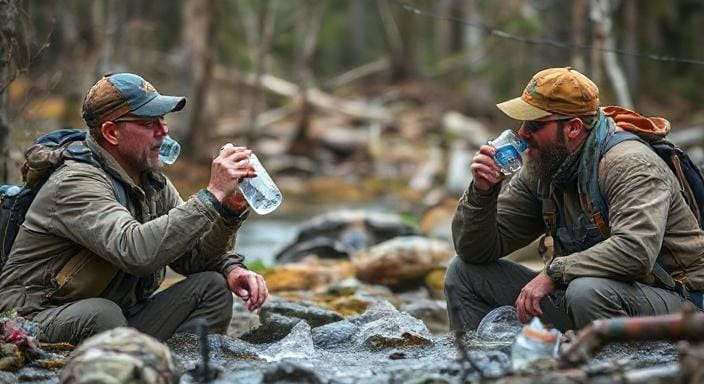
Let’s see—what do we need more than anything else when we’re sweating buckets on a hike? Water! Staying hydrated is crucial because dehydration can sneak up on you faster than my dog when he hears the treat jar open. Always carry enough water or have reliable ways to purify water from natural sources along your route.
On another note, don’t underestimate the power of snacks! High-energy foods like nuts and granola bars can keep you fueled during those long treks through scenic landscapes.
Just remember not to leave food lying around at camp unless you’re eager for an uninvited visit from raccoons who act like they own the place—and trust me; they tend to party hard!
Understand Weather Patterns
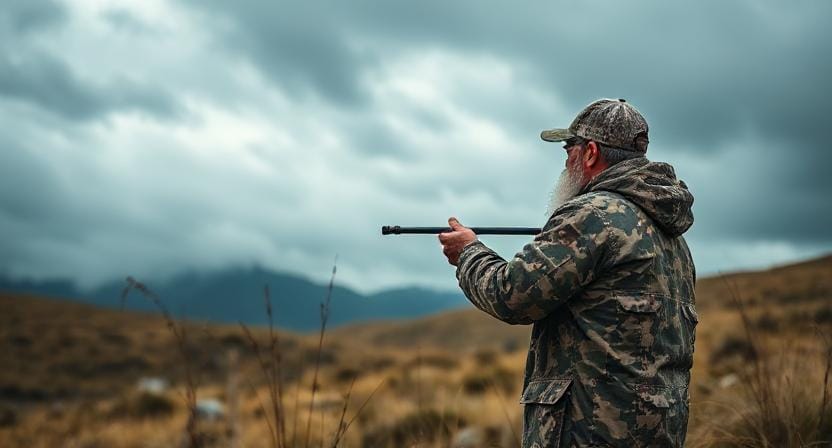
Weather can change faster than my mood after realizing I’ve forgotten my favorite hoodie at home—a total disaster! Therefore, keeping an eye on weather forecasts before heading out is non-negotiable. Nothing ruins an outdoor excursion faster than unexpected rainstorms or surprise snow flurries (unless you’re into extreme sports).
If storms are brewing in your area or temperatures are soaring higher than usual—consider postponing your plans or modifying them accordingly. By all means, embrace spontaneity—but maybe save skydiving from thunderstorms for another day!
Wildlife Awareness: The Good and The Not-So-Good

Let’s talk about our furry friends—the ones that roam freely in nature but may not always have our best interests at heart. Understanding wildlife behavior is paramount; after all, nobody wants an up-close encounter with a bear—or worse yet—a skunk!
When hiking or camping in areas known for wildlife activity (which should be most places outside your living room), make noise as you move along trails so animals know you’re coming—not because they want an autograph but because they’d rather avoid humans altogether.
And speaking of avoiding humans… if you do come across wildlife looking overly curious about what you’re doing near its territory? Well then again—slowly back away while pretending not to exist until you’ve safely distanced yourself from whatever creature it was!
Emergency Preparedness: Plan for the Unexpected
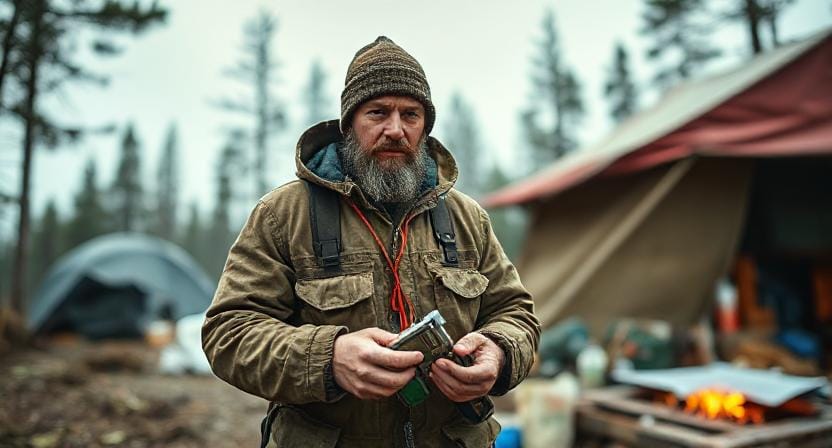
In life—and especially outdoors—unexpected situations arise faster than my kids asking what’s for dinner every five minutes. This means having emergency plans in place ahead of time will help ensure everyone stays safe during adventures gone awry.
Create contingency plans based on different scenarios such as injury management techniques or how you’ll signal someone if separated from your group (hint: yelling “Help!” only works sometimes). Plus consider carrying portable chargers for phones—they’re invaluable when stranded without cell service but still needing directions back home.
Lastly—and this might seem obvious—always tell someone where you’re headed before leaving civilization behind! That way if things go sideways (like forgetting which direction leads back), someone knows where they should start looking instead of sending search parties out searching randomly through grocery stores thinking maybe that’s where you’d gone instead…
Conclusion
Outdoor safety isn’t just about following rules—it’s about making smart choices so that every adventure becomes memorable rather than regrettable!
With proper planning paired with humor-infused positivity (and maybe even some epic s’mores), we’ll conquer those wilderness challenges together while ensuring everyone returns home safely… albeit slightly dirtier than when we left!
Frequently Asked Questions
Why is it important to tell someone where I’m going before a hike or camping trip?
Letting a trusted person know your route and expected return time ensures someone can alert help if you get lost, injured, or delayed. It’s a simple safety habit that can save your life in an emergency.
What gear do I really need for outdoor safety?
A basic safety kit should include a map, compass, first aid supplies, extra food, water purification tools, a whistle, and a flashlight. These essentials help you handle common problems like getting lost, injured, or stuck overnight.
How do I avoid getting lost in the wilderness?
Always carry a physical map and compass, even if you use GPS. Study your route before leaving, pay attention to trail markers, and check your position often to avoid wandering off course.
How much water should I carry while hiking?
Carry at least one liter of water for short hikes and more for longer trips, especially in hot weather. It’s also smart to bring a water filter or purification tablets in case you need to refill from natural sources.
How can I keep animals away from my campsite?
Store all food in sealed containers or hang it away from your campsite. Avoid leaving crumbs or trash around, and never keep food in your tent—unless you want raccoons, bears, or curious critters as midnight visitors!
What should I do if the weather suddenly changes?
Check the forecast before heading out and pack extra layers and rain gear. If the weather turns dangerous—like lightning, heavy winds, or freezing rain—seek shelter and turn back if necessary. Safety beats pride every time.
How do I handle encountering wildlife on the trail?
Most animals avoid humans, but if you see one, stay calm and don’t run. Make yourself visible, speak calmly, and slowly back away. Give wildlife space and they’ll usually leave you alone.
Suggested Resources:
Leave No Trace Center for Outdoor Ethics
https://lnt.org/
American Hiking Society
https://americanhiking.org/
National Park Service Safety Tips
https://www.nps.gov/subjects/safety/index.htm

Kevin Collier is a seasoned outdoor enthusiast and writer for Trekbug.com, specializing in outdoor adventures, survival strategies, and prepping insights. With a deep love for nature and a commitment to self-sufficiency, Kevin empowers readers to embrace the wilderness confidently. He shares valuable tips, practical techniques, and inspiring stories, helping both novice and experienced adventurers develop essential skills for surviving and thriving in the great outdoors.


